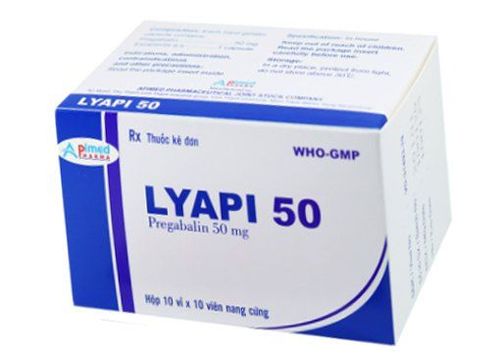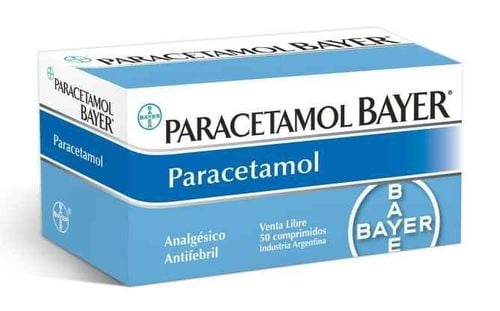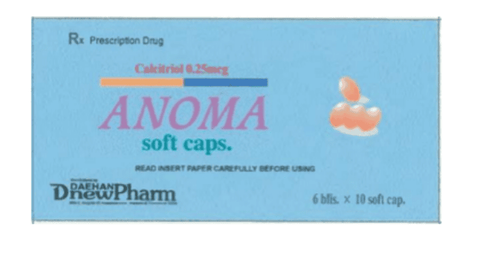This is an automatically translated article.
Zanidion belongs to the group of pain relievers, anti-inflammatory drugs, commonly used in the treatment of mild to moderate pain symptoms. In addition to the effective use of the drug, patients also need to pay attention to some of the side effects that the drug causes.1. What is Zanidion?
Zanidion's main ingredients are Acetaminophen, Codeine phosphate, which belongs to the group of analgesics, antipyretics, non-Steroid anti-inflammatory drugs, drugs for the treatment of Gout and joint diseases. Zanidion is commonly used in the treatment of moderate pain such as: muscle pain, neuralgia, menstrual pain, postoperative pain, headache.Treatment of toothache, muscle pain, pain due to injury, pain caused by arthritis.
Use of drugs in supporting pain relief from rheumatoid arthritis and other joint diseases.
Zanidion is also used to lower body temperature in febrile patients.
Mechanism of action:
Ingredients Paracetamol has the following uses:
Relieve peripheral pain of mild to moderate intensity such as toothache, joint pain, muscle pain. The drug is also effective in reducing fever and lowering body temperature in people with fever by dilating peripheral vessels and increasing sweating by blocking the synthesis of Prostaglandin. Codeine phosphate ingredients have the following effects:
Central pain relief, when combined with Paracetamol ingredients, it will greatly increase the analgesic effect of the drug compared to using each active ingredient separately and the duration of action is also longer. .
2. Dosage and usage
How to use : The drug is prepared in the form of long tablets and is used orally.Dosage: For adults and children over 15 years old: Depending on the level of pain, use 1 to 2 tablets once, take 1 to 3 times a day. Dosing times should be at least 4 hours apart. In case of patients with severe renal impairment with creatinine clearance less than 10ml/min, the interval between doses should be at least 8 hours.
Contraindications:
Do not use with patients who are allergic to Paracetamol or codeine components. Use the drug in cases of patients with impaired liver function and respiratory failure. Use this medicine for children under 15 years old or with children under 18 years of age who have had a tonsillectomy. Note: When patients use the drug for a long time, it is necessary to monitor kidney function or for people with kidney failure, it is also necessary to monitor kidney function regularly.
3. Overdose and how to handle it
Overdose with paracetamol:The most common symptoms include nausea, vomiting, loss of appetite, pale face, abdominal pain, these symptoms usually appear in the first 24 hours after using the drug. In case of using too high a drug dose of more than 10 grams in adults, it can cause hepatocellular degradation leading to complete and irreversible necrosis, metabolic acidosis, causing encephalopathy leading to coma or more serious than death. How to handle: In severe cases, the doctor will appoint the patient to wash the stomach to eliminate toxins of the drug in the body. In case of mild reactions, treatment will be according to symptoms. Symptoms of overdose with Codeine components:
Adults will often develop reactions such as slow breathing, pale face, drowsiness, rash, vomiting, ataxia and, rarely, pulmonary edema. Children often show symptoms such as pupillary constriction, facial edema, urinary retention, and convulsions. Treatment: Support breathing by using Naloxone for intravenous injection.
4. Caution
Use drugs containing Paracetamol in patients with a history of anemia because the drug can cause side effects that increase the concentration of methemoglobin in the blood. While using the drug, patients should not use alcohol because it can increase toxicity in the liver. Use caution when using the drug when the patient has respiratory problems such as emphysema (a form of chronic obstructive pulmonary disease). Patients should absolutely not use the drug for too long because it can lead to addiction. When treating the disease with codeine component for a long time with a drug dose of 240 - 540mg/day, it can cause addiction. Common symptoms of drug deficiency include restlessness, tremors, muscle twitching, sweating, and runny nose. In the case of patients with increased intracranial pressure when using the drug Zanidion, this condition may be aggravated. During the use of drugs containing the active ingredient Codeine may lead to positive test results for stimulants. Do not use for pregnant and lactating women because it affects the development of the fetus and the drug can be excreted in breast milk and affect the development of the newborn. Use Codeine-containing medicines in children over 15 years of age for moderate acute pain when other pain relievers such as Paracetamol and ibuprofen have not been effective. The drug should only be used for the shortest time with the lowest dose with the result of remission. Be careful in using the drug for children if the patient has breathing problems such as difficulty breathing, wheezing while sleeping. Patients should be cautious when co-administering Zanidion with hypnotics in patients with traumatic brain injury, brain damage, or increased intracranial pressure. The drug should be used with caution in the elderly, in patients with a weakened body, in patients with liver failure, renal failure, hypothyroidism, Addison's disease, prostate enlargement or urethral stricture.
5. Side effects of drugs
Some common side effects such as: Rash, urticaria, red skin. Effects on the gastrointestinal tract: May cause constipation, nausea, vomiting. Effects on the respiratory system such as bronchospasm, respiratory depression. Systemic reactions: Dizziness, somnolence. When using the drug, the doctor should inform the patient because of the unwanted reactions affecting the skin such as Stevens-Johnson syndrome (SJS), toxic syndrome (TEN) or Lyell's syndrome, exanthematous syndrome. acute systemic pustulosis.
Overdosing on drugs can lead to the risk of dependence and the development of withdrawal symptoms when the drug is stopped abruptly.
6. Drug interactions
Absolutely do not use the drug with alcohol because alcohol increases the sedative effect of the component Codeine, it reduces the concentration of the patient, especially for those who need to operate machinery or need to control vehicles. Concomitant use with morphine agonists - antagonists such as buprenorphine, nalbuphine, pentazocin: Using these drugs together may increase the risk of developing an addictive syndrome and reduce the effectiveness of the drug. Be careful when combining drugs with central nervous system depressants such as morphine group analgesics, antidepressants, tranquilizers, anxiolytics, sleeping pills, barbiturates,... because they will increase depression. central nervous system. Other Morphine derivatives such as analgesics and antitussives: Causes respiratory depression, especially in the elderly.













